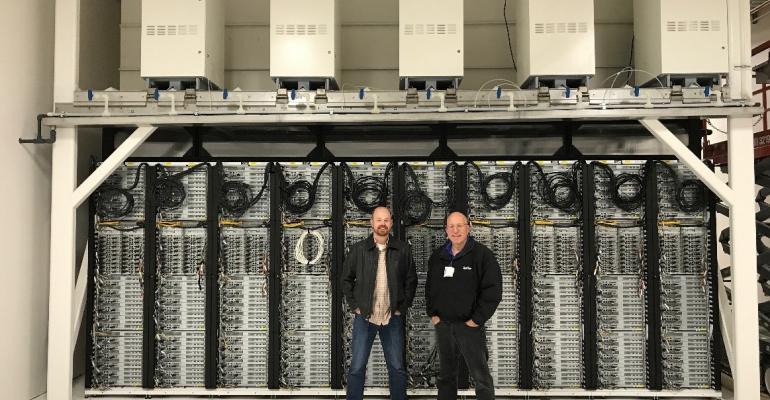The team of researchers at Microsoft that spends its time investigating new ideas for making the cloud giant’s global data center infrastructure more efficient and cost-effective have launched a pilot data center in Seattle powered entirely by natural gas.
Called Advanced Energy Lab, the project is related to but different from a previous project in Southern California, where the company together with a university tested the idea of putting gas fuel cells directly inside IT racks. It is a 20-rack data center built together with McKinstry and Cummins to expand testing the concept of cutting dependence on the electrical grid.
While fuel cell-powered data centers exist, they typically use the cells to supplement overall energy supply (Apple data center in North Carolina), or act as the primary supply, while using the grid as backup (eBay data center in Utah).
The problem with using the electrical grid (besides poor reliability) is that energy goes through many conversion steps and travels over long distances between generation and final consumption points. Some energy is lost at every conversion step, and every piece of equipment energy goes through is a potential point of failure. Putting generation right at the consumption point simplifies the entire delivery chain and reduces losses.
Microsoft’s pilot in Seattle has natural gas pipelines running directly to the fuel cells in IT racks. “What makes this project so disruptive is how radically it simplifies the process of powering servers and how this could almost double the energy efficiency of datacenters—all while reducing costs and improving reliability,” Christian Belady and Sean James, top Microsoft infrastructure researchers, wrote in a blog post.
This stark and simple design significantly reduces the amount of energy lost in power generation, transmission, and power conversion. Right now, data centers are powered by the electrical grid, which flows from a power plant, through multiple substations and transmission lines, and then must be converted into the right voltage for a datacenter before we can use it. With fuel cells powered directly from the natural gas line, we cut out all those steps, and remove the energy losses that occur through this long transmission process as seen below.
With fewer pieces in the supply chain, there are fewer potential points of failure. That helps improve the reliability of our power supply and our data centers. And, of course, with this simplification comes a reduction in cost. Eliminating electrical distribution, power conditioning, and backup infrastructure makes a data center easier and less expensive to build, operate and manage.






